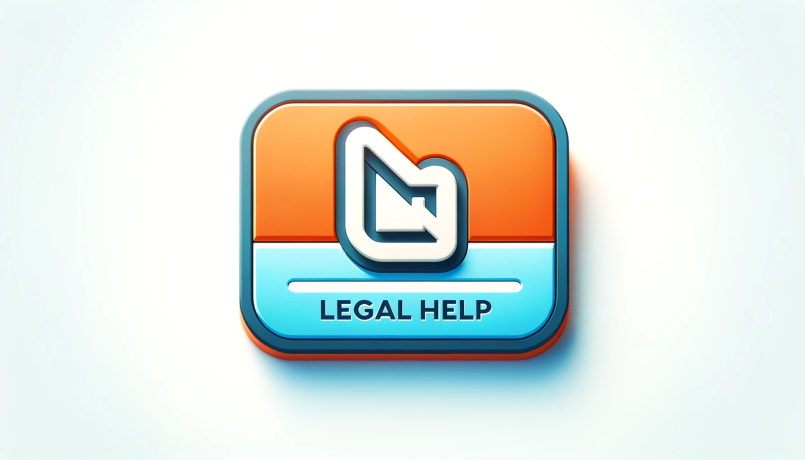
Following a car accident, individuals must gather evidence, communicate with insurance companies, and pursue appropriate compensation for any damages or injuries incurred. This process is essential for ensuring fair resolution and support during recovery.
by LawInc Staff
December 6, 2023
If you’ve suffered injuries in a car accident that wasn’t your fault, you may be eligible to seek compensation by filing an auto injury claim. Follow these 10 key steps to give yourself the best chance of recovering damages.
Successfully filing an auto accident injury lawsuit involves important considerations around evidence, legal options, negotiations, and more. This guide outlines the core process to help you build a strong case.
Read on for an overview of key actions to take after an auto collision.
1. Seek Medical Care
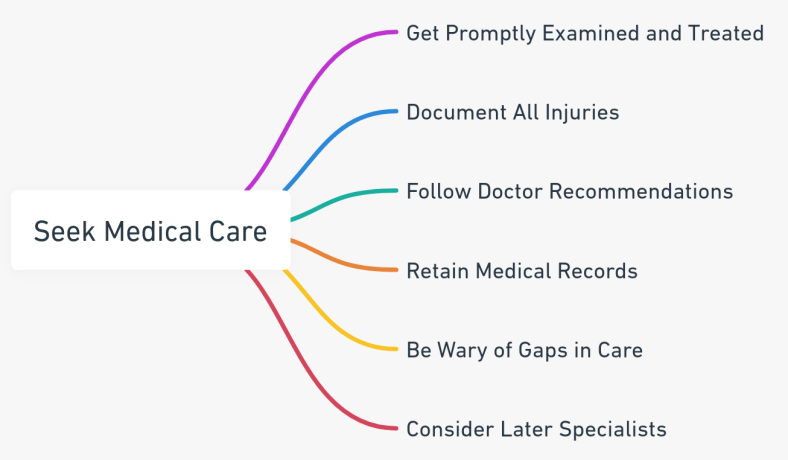
Key medical actions post-auto collision.
-
- Document All Injuries: Critical for proving accident impact and justifying damages requested.
- Follow Doctor Recommendations: Adhering to prescribed treatment plans demonstrates injury severity and garners sympathy.
- Retain Medical Records: Key evidence; provides dates, diagnostic details, treatments; retains objectivity.
- Be Wary of Gaps in Care: Inconsistent treatment creates doubt regarding injury extent and veracity of pain and suffering claims.
- Consider Later Specialists: Consulting orthopedists, physiatrists etc. months later proves long-term effects.
2. Report & Document the Accident
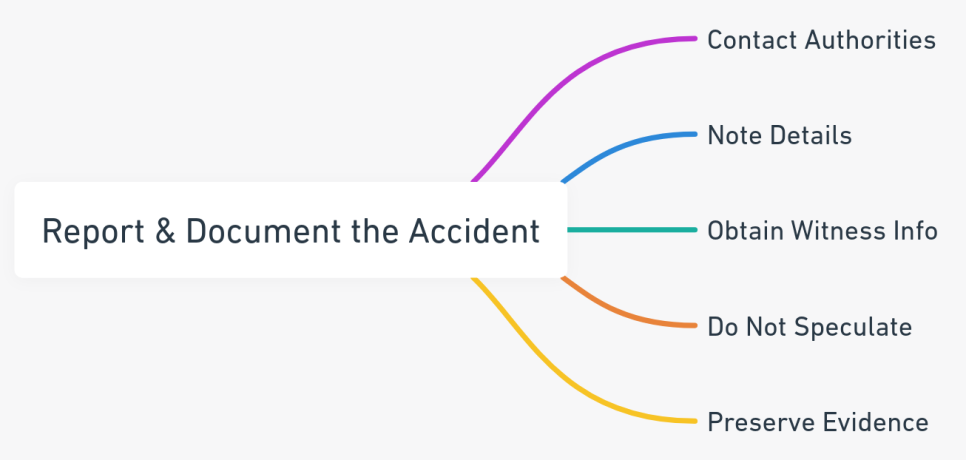
Essential reporting and documenting actions after an auto accident.
-
- Contact Police: Generates independent official documentation; gives greater credence to account.
- Note Details: Collect information on all vehicles/drivers involved; take photos of damage, skid marks, etc.
- Obtain Witness Info: Corroborates events; garners third-party credibility.
- Do Not Speculate: Stick to facts and avoid subjective statements about cause or fault.
- Preserve Evidence: Retain police reports, photographs etc.; consult a lawyer before discarding vehicle parts.
3. Consult an Attorney
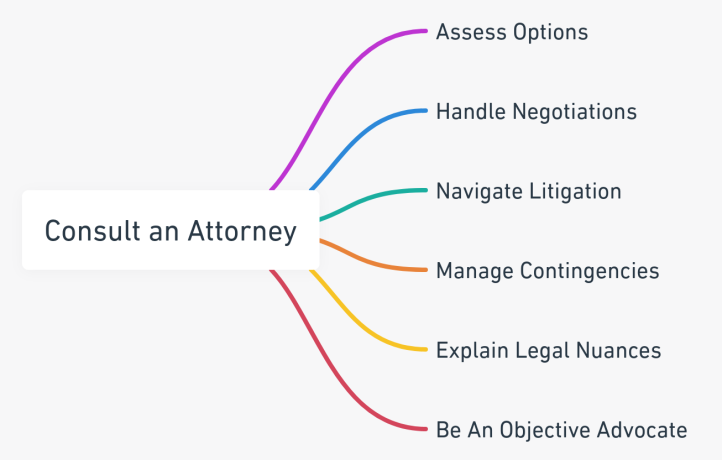
Important steps in consulting an attorney for your auto accident case.
-
- Assess Options: Determine viable legal avenues for seeking recompense based on case specifics.
- Handle Negotiations: Seasoned lawyers effectively negotiate suitable settlements; adds weight versus insurers.
- Navigate Litigation: Specialized legal expertise strengthens lawsuits if settlement talks fail.
- Manage Contingencies: Most auto accident lawyers work on contingency, getting paid only if compensation awarded.
- Explain Legal Nuances: Help determine viable defendants and decipher time limits, evidence rules etc.
- Be An Objective Advocate: Able to distance themselves from the trauma; pragmatically work to maximize claim value.
4. Calculate Damages
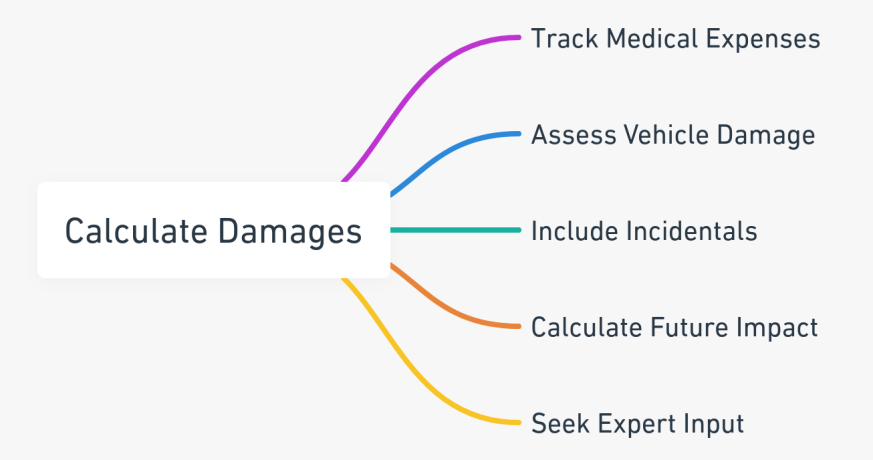
Key considerations in assessing damages in auto accident claims.
-
- Track Medical Expenses: Doctor fees, hospital bills, prescription and equipment costs etc.; missed work also factors in.
- Assess Vehicle Damage: Repair bills, rental car fees, loss of vehicle value due to branding as wrecked.
- Include Incidentals: Consider related travel costs, property losses etc.
- Calculate Future Impact: Expected costs for continued treatments, medications, and lost income potential.
- Seek Expert Input: Doctors, vocational experts etc. may help determine and justify damages.
5. Assess Liability & Contributing Factors
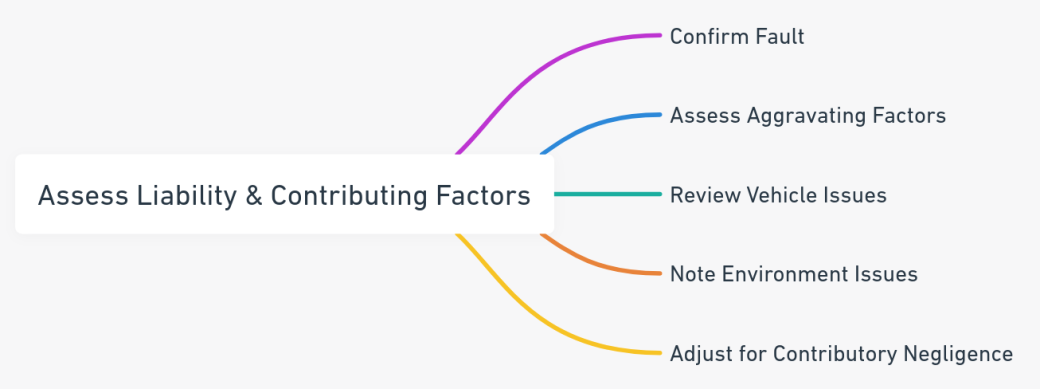
Essential aspects of liability assessment in auto accident cases.
-
- Confirm Fault: Police reports, eyewitnesses etc. help establish negligence responsibility.
- Assess Aggravating Factors: Consider distraction, speeding, intoxication etc. that amplified collision impact.
- Review Vehicle Issues: Equipment defects like faulty brakes shift liability to automakers.
- Note Environment Issues: Poor signage, damaged roads etc. can prove governmental liability.
- Adjust for Contributory Negligence: Your mistakes can reduce compensation; experienced lawyers aptly respond.
6. Send Demand Letters
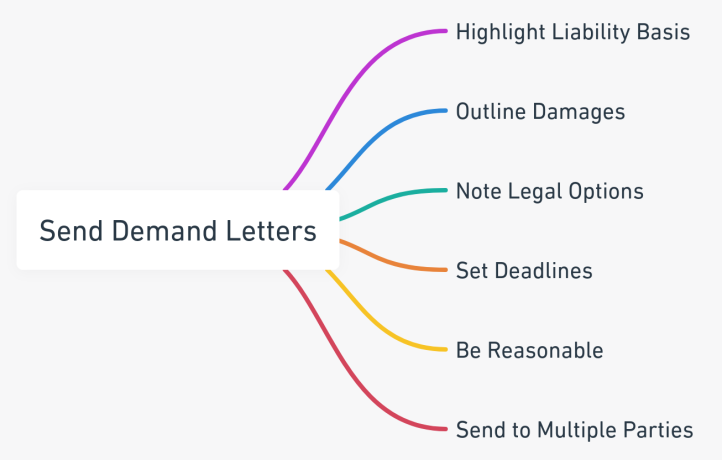
Key steps in preparing and sending demand letters after an auto accident.
-
- Highlight Liability Basis: Demonstrate clear grounds for defendant fault and responsibility.
- Outline Damages: Emphasize financial, physical and emotional losses fueled by negligence.
- Note Legal Options: Hint at potential for expensive litigation and public trials if demands unmet.
- Set Deadlines: Prompt respond-by dates compels actions versus indefinite delays.
- Be Reasonable: Extreme initial demands undermine credibility; better to start lower.
- Send to Multiple Parties: Include all plausible defendants and their insurance firms.
7. Attempt Settlement
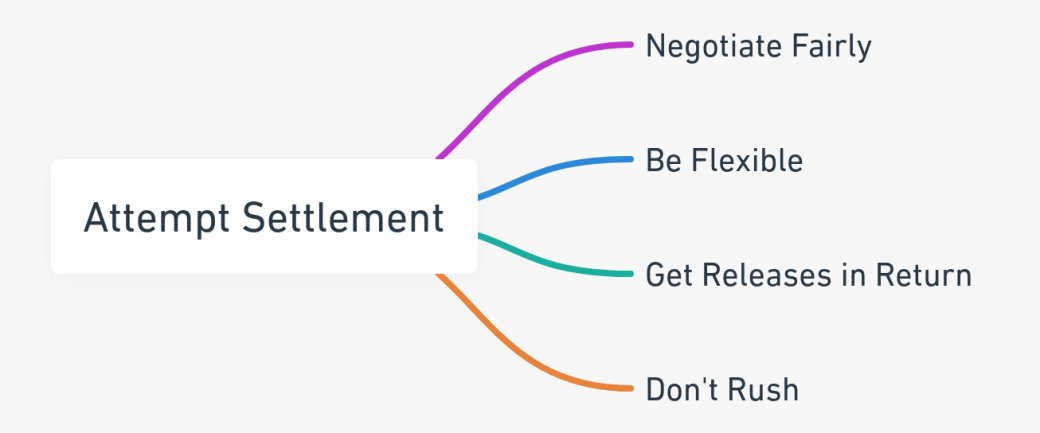
Navigating the settlement process in auto accident claims.
-
- Negotiate Fairly: Discussions typically involve back-and-forth counter-offers before aligning on an acceptable figure.
- Be Flexible: Avoid rigidity around a specific compensation amount; focus on recovering provable losses.
- Get Releases in Return: Settle contingently upon signing liability releases from defendants.
- Don’t Rush: Pressure to settle prematurely often reduces compensation obtained.
8. File a Lawsuit
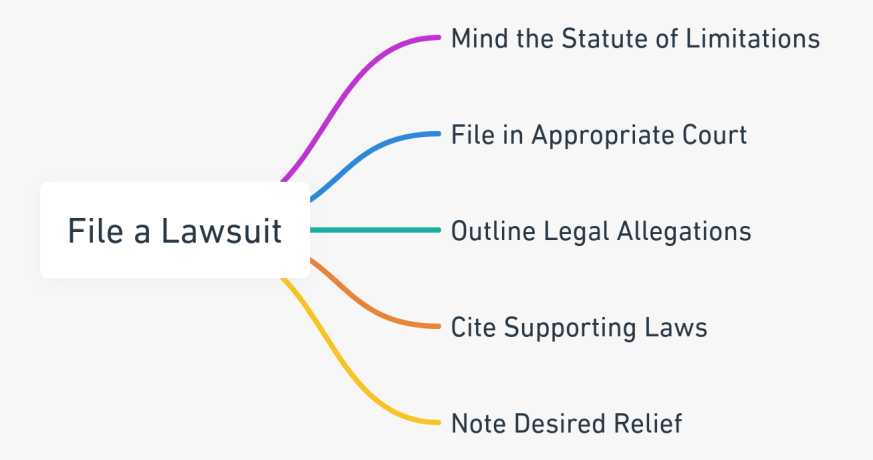
Navigating the lawsuit filing process in auto accident cases.
-
- Mind the Statute of Limitations: Strict deadlines dictate filing period; typically 2 years from incident date.
- File in Appropriate Court: Consider case value and defendant residence to determine venue.
- Outline Legal Allegations: Defendant negligence, extent of injuries and losses incurred etc.
- Cite Supporting Laws: Local/state statutes violated; grounds for financial restitution.
- Note Desired Relief: Specify compensation amounts sought; attach evidence like medical records and repair invoices.
9. Engage in Discovery
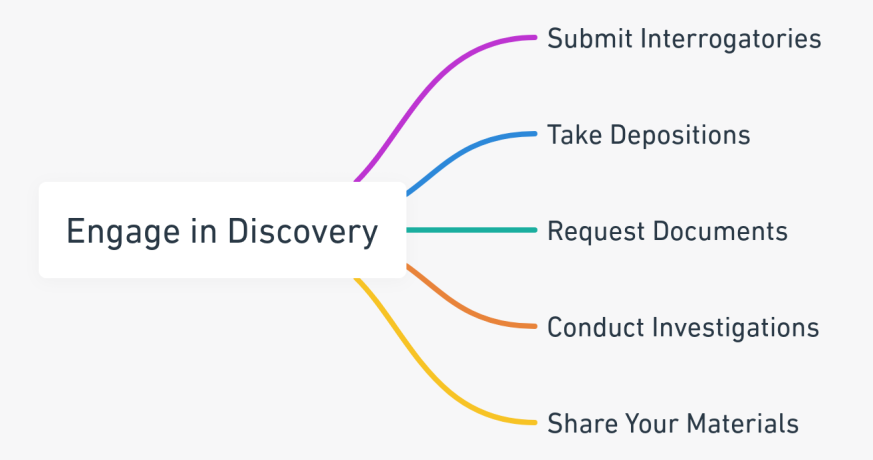
Understanding the discovery process in auto accident legal cases.
-
- Submit Interrogatories: Requires defendants to answer questions under oath regarding the issues.
- Take Depositions: Put defendant and witnesses under oath; testimony transcribed and becomes official.
- Request Documents: Insurance policies, medical reports, employment records etc.
- Conduct Investigations: Independent crash analysis, medical reviews etc. to counter defense arguments.
- Share Your Materials: Ethical and procedural rules dictate providing access to evidence.
10. Go to Trial
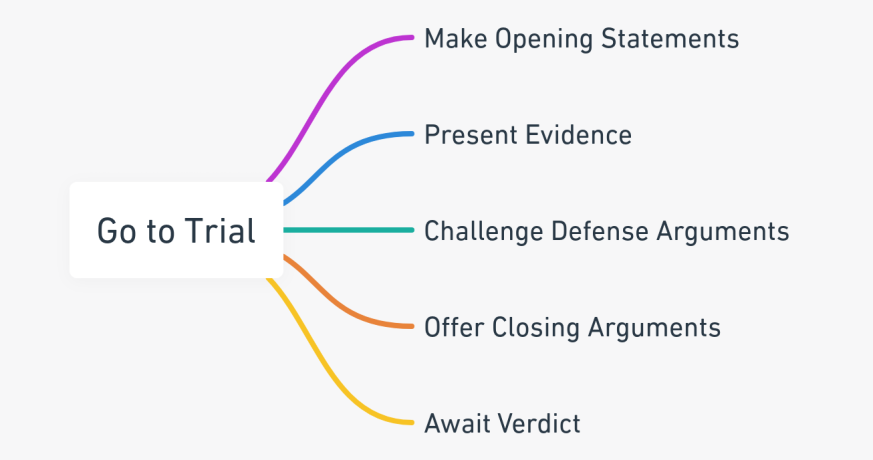
Key steps in the trial phase of an auto accident lawsuit.
-
- Make Opening Statements: First opportunity to frame key issues for judge/jury.
- Present Evidence: Witness testimonies, documentation, expert analyses etc.
- Challenge Defense Arguments: Cross-examine their witnesses; discredit disputed evidence.
- Offer Closing Arguments: Final statements to emphasize liability, harm inflicted and appropriate compensation.
- Await Verdict: Decision typically based on appeal to judge/jury sentiment regarding justice and facts presented.
Summary
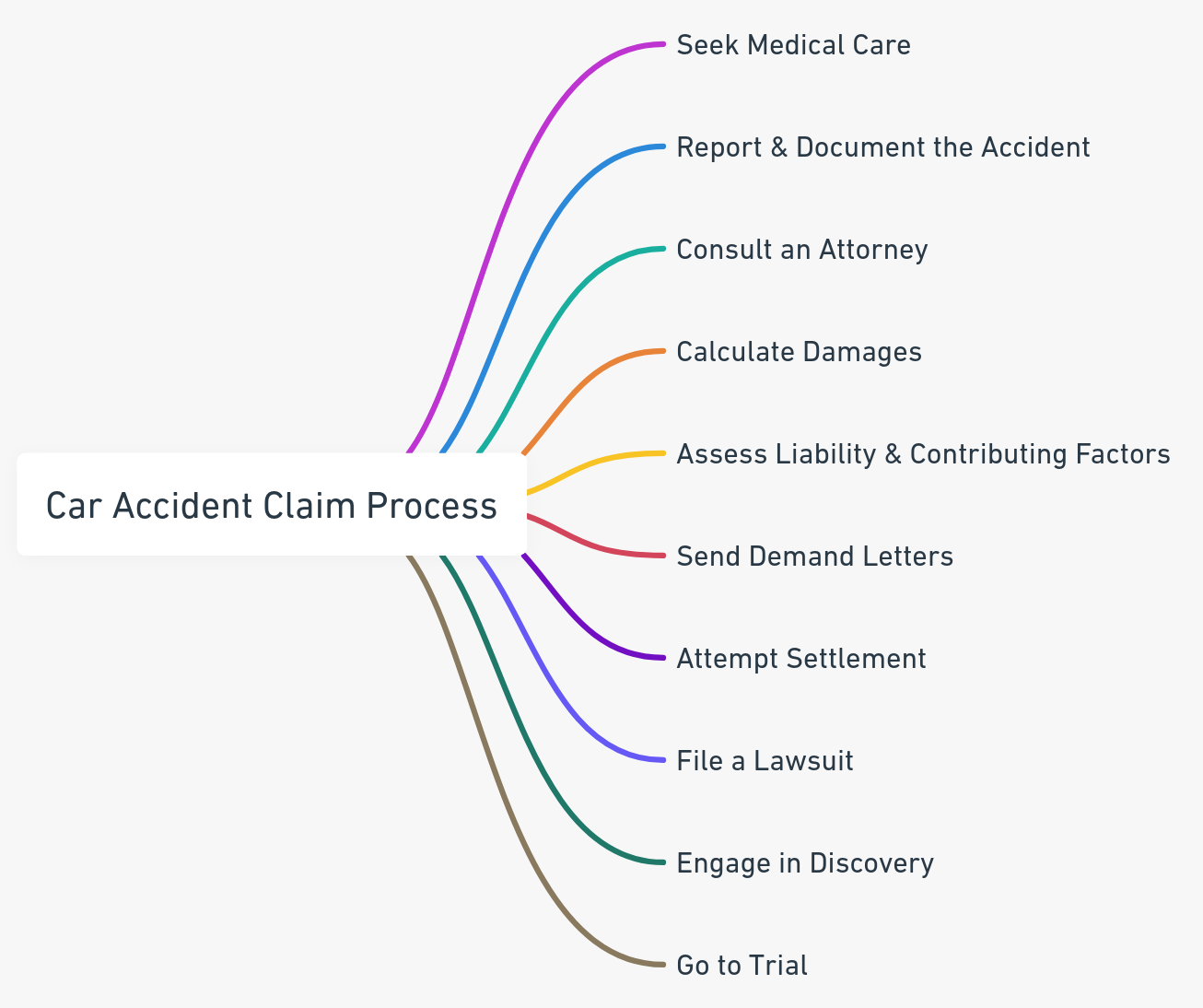
Visual Guide to the Car Accident Claim Process
While most victims understandably prefer avoiding the uncertainty and costs of prolonged litigation, be fully prepared to take this route when warranted. With due diligence and persistence, justice often gets served either via verdict or by bringing obstinate defendants back to the settlement table.
We hope this guide gave you clarity on pursuing fair restitution for crash injuries via strategic documentation, negotiation and litigation preparation.
Quiz
Quiz: Seeking Compensation for Auto Accident Injuries
-
- Q1: What is the average statute of limitations for filing a car accident injury lawsuit? A) 1 year B) 18 months C) 2 years
- Q2: Who is typically responsible for sending demand letters to initiate settlement talks? A) Insurance adjusters B) Plaintiff’s attorney C) Police
- Q3: True or False: Gaps in medical treatment can negatively impact injury claim value. A) True B) False
- Q4: What is the average car accident injury claim settlement amount? A) $15,000 B) $24,000 C) $31,000
- Q5: Which of these typically pays for plaintiff attorney fees in injury cases? A) Client payments B) Settlement proceeds C) Contingency fees
- Q6: What evidence can be requested during pre-trial discovery? A) Medical reports B) Witness statements C) Accident reconstruction analyses D) All of the above
- Q7: True or False: Juries decide most car accident lawsuits. A) True B) False
- Q8: Which parties must be sent a demand letter? A) Drivers only B) Drivers and their insurance companies C) Insurance companies only
- Q9: What typically happens if an initial settlement offer gets rejected? A) Case gets dropped B) Counter-offer submitted C) Lawsuit filed
- Q10: During trial, when do plaintiffs present closing arguments? A) Before defense closing B) After defense closing C) Order varies
Answers: Q1 – C) 2 years, Q2 – B) Plaintiff’s attorney, Q3 – A) True, Q4 – B) $24,000, Q5 – C) Contingency fees, Q6 – D) All of the above, Q7 – B) False, Q8 – B) Drivers and their insurance companies, Q9 – B) Counter-offer submitted, Q10 – A) Before defense closing
Need Help With Your Car Accident Case or Other Legal Help?
Contact us to be connected with an attorney who can provide a free case assessment and help guide you through the process of seeking maximum compensation for your injuries, or if you need any other legal help.
Disclaimer:
The information in this guide applies to auto accident claims in most states, but some laws around filing deadlines, litigation processes etc. can vary by jurisdiction. Consult with a local attorney to understand state-specific regulations and best pursue your rights to recovery.
This guide presents general information and should not be considered formal legal advice. Every auto accident case involves unique circumstances regarding actual damages, viable defendants, settlement potentials etc. Connect with a qualified personal injury lawyer for advice tailored to your particular situation.
